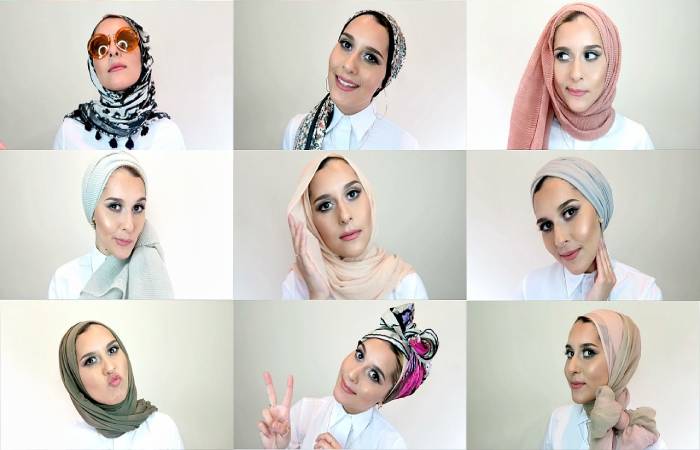Table of Contents
Hijab Definition
The hijab is a veil that covers the head and chest that Muslim women can wear from the instant they have their first menstruation in the presence of adult men other than their immediate family.
The hijab can further denote any head, face, or body covering worn by Muslim women that similarly accords with a certain standard of modesty.
It can also refer to the seclusion of men’s women in the public sphere, or it can embody a metaphysical dimension: Al-hijab refers to “the veil that separates man or the world from God.”
The hijab is an Islamic female dress code that establishes that most of the body must cover and that, in practice, it manifests with different types of garments, according to areas and times. It often uses to designate a specific modern garment, also called an Islamic veil, in a restricted sense.
Different Ways to Wear a Hijab

There are many different ways to wear a hijab. The primary triangle method will keep it fixed all day, making it a good option for school or work. For a more mature and stylish alternative, use a pashmina to create a more elegant look with a side clasp. If you want the quickest option possible, consider buying a one or two-piece Al-Amira that you can slide over your head, deprived of having to layer or fasten it.
Method 1 – The Basic Triangle Style
Choose a square scarf: This method works well with a lightweight, square-shaped scarf made of any fabric. Choose a light satin or cotton fabric for the summer and a heavier one like wool for warmth in the winter. You will also need two scarf clips.
Fold the upper right corner to the inferior left: You will now have a scarf folded into a triangle shape.
Place the scarf on your head: The longest side of the triangle should be on your forehead, and the two points should fall on your shoulders. The third point of the triangle will be behind your head.
Button the edges of the scarf under your chin: Open your mouth in an “O” shape as you do so so that your jaw has room to move once the hijab is secure. Button the fabric under your chin.
Cross the ends of the scarf over your neck: Cross the left side to right and right to the left. Let the tips rest on your shoulders.
Fasten the ends of the scarf behind your head: Lift the back end of the fabric and fasten them behind your head. Then drop this back end over the buckled part.
Adjust as necessary: Make sure the scarf is smooth and secure in place.
Method 2 – The Button-Down Style
Choose a rectangular scarf: You can use a pashmina or some other sizeable rectangle-shaped scarf. You will also need a brooch.
Place it on your head: The edge of the scarf should go over your forehead, with the sides falling over your shoulders. Adjust the fabric so that one of the hanging sides is twice as long as the other.
Wrap the long finish of the scarf around the chin and overhead: Drop the end over the opposite shoulder.
Pin the end with a clasp to the side of your head: Use a unique scarf to secure it.
Adjust the scarf as necessary: This should look like it forms a long, loose loop around your head and under your chin. Make sure it is well secured and that it will not fall off.
Method 3 – Al-Amira One or Two Pieces
Choose a one or two-piece Al-Amira veil: The one-piece version has a hole in the middle so that you can slide it over your head with ease. The two-piece version also includes an inner scarf to provide more coverage to your head.
Place the inner scarf on your head: Put it on like a headband. It should be on your forehead to cover that part more. If you have the one-piece version, you can skip this step.
Slide your head finished the opening of the scarf: Arrange it so that the fabric surrounds your head and the wrinkles rest on your shoulders, chest and back.
Arrange the pleats, so they are comfortable: Make sure the veil is securely in place, or it will fall off.
Advice
- Always make sure to tie your hair tightly to prevent it from slipping out of the hijab.
- The hijab should cover your neck, and no hair should be visible!
- When you are at home base, take it off.
Warnings
- Make certain you don’t snag your hair on somewhat.
- Don’t hold your hair too tight.
Also Read: WHAT IS SKIN TAGS? – CAUSES, SYMPTOMS, AND 9 HOME REMEDIES

